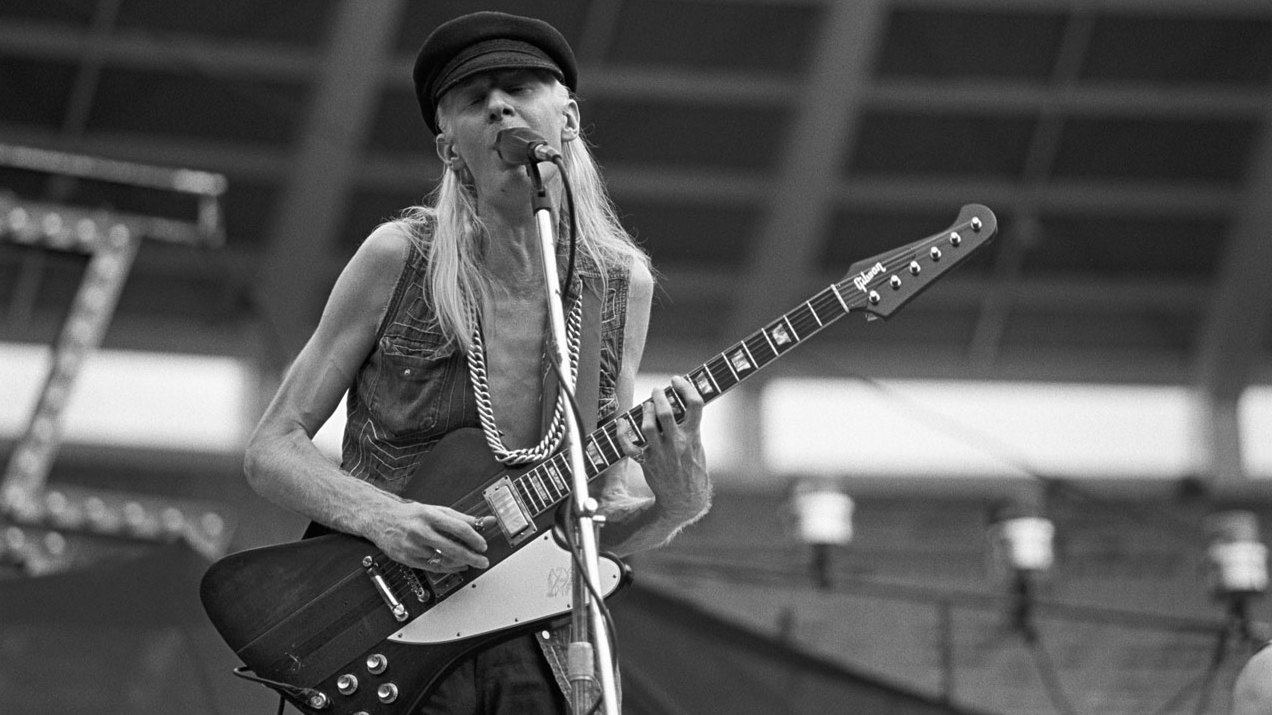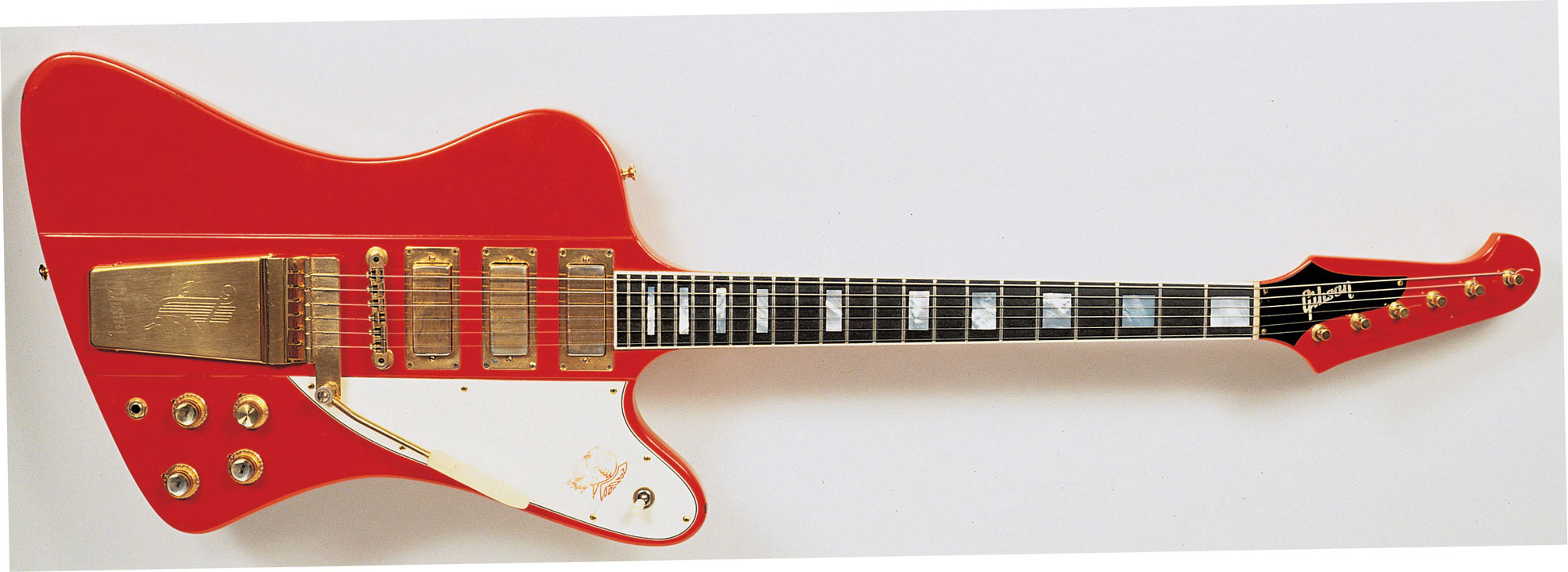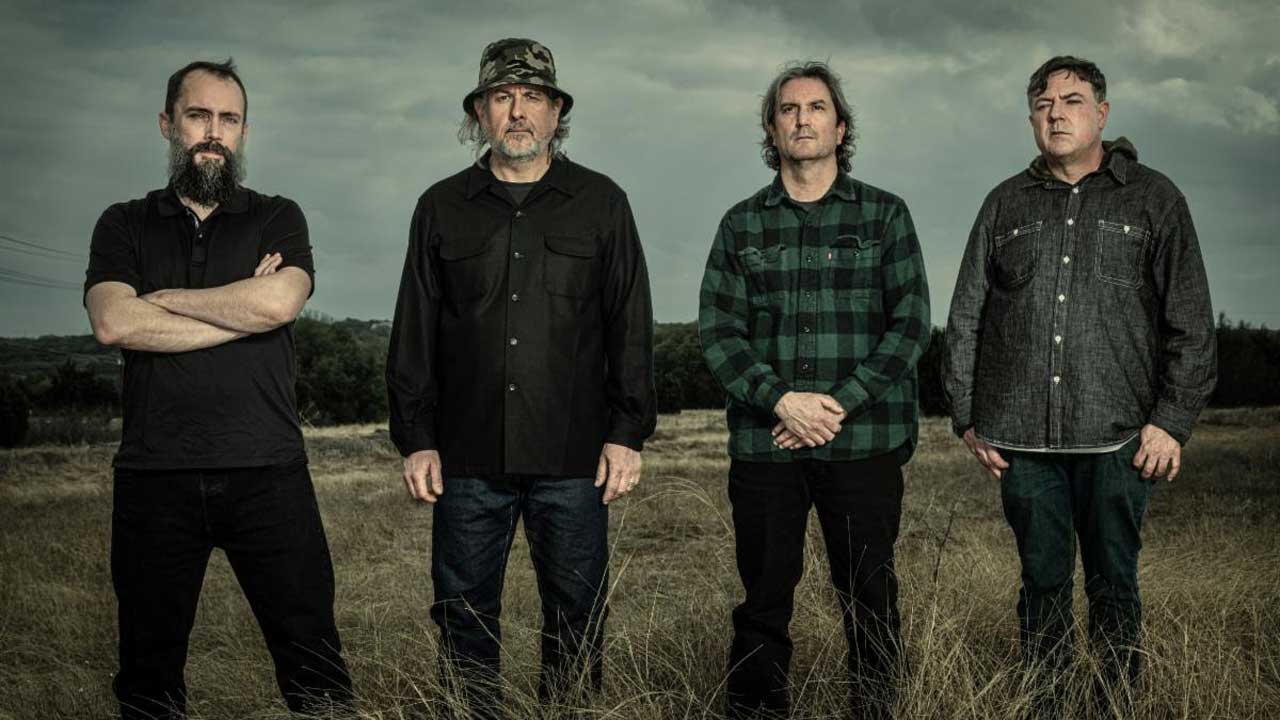The Guitars That Built Rock: The Gibson Firebird
When it comes to the coolest looking Gibson electric ever made, Eric Clapton, Brian Jones and Johnny Winter knew the 'Bird was the word...

Fender owned the electric guitar market in the early 60s. Gibson on the other hand couldn’t catch a break. The single cutaway Les Paul models went the way of the dinosaurs - in favour of the new SG body models - while the Flying V and Explorer tryouts had been received with all the enthusiasm of the Sinclair C5. Even Gretsch and Rickenbacker were kicking Gibson’s arse thanks to Beatles John and George. They desperately needed a win.
Fender were riding the crest of the surf music craze with the Stratocaster, Jaguar and Jazzmaster models. And it wasn’t just about the sound. In the late 50s, Leo Fender and his crew had the brilliant idea of offering their guitars in custom DuPont paint, the same glossy stuff used to finish cars rolling out of Detroit. This made their already futuristic guitars look sexy as hell. You see, Gibson stuff came in gold or black… and eventually, cherry sunburst. Alternatively, you could order your Fender in hues like Lake Placid Blue, Dakota Red, Shoreline Gold, Sherwood Green Metallic.
For their next punt at a Fender beater, Gibson’s president and resident genius Ted McCarty took Fender’s automotive trick one step further by asking 68-year old retired motor designer Ray Dietrich to come up with a new six-string concept. Dietrich had form having designed Packards, Lincolns, and New York cabs for the Checker company. His response to McCarty’s request was the Firebird.



Easily one of the most beautiful guitar designs ever, the Firebird was alas never a huge sales success but it attracted players like Phil Manzanera of Roxy Music, Joe Bonamassa and, most iconically, Texas blues legend Johnny Winter.
“I was initially attracted to the Firebird because I liked the way it looked,” said Winter, “and when I played it I discovered I liked the way it sounded, too. The Firebird is the best of all worlds. It feels like a Gibson, but it sounds closer to a Fender than most other Gibsons. I was never a big fan of humbucking pickups, but the mini-humbuckers on the Firebird have a little more bite and treble.”
Was it the perfect guitar? Nope… Not even close. They can be neck heavy and a ball ache to keep in tune. Thing is, they look the absolute balls and - if we’re all up for being honest here - that’s just as important as all that playability and tone stuff…
Eric Clapton was an early ‘Bird watcher. To hear a classic mini-humbucker-fuelled ‘Bird tone, check out Eric playing Sunshine Of Your Love on his Firebird I on with Cream on the Glen Campbell Show in 1968.
Sign up below to get the latest from Classic Rock, plus exclusive special offers, direct to your inbox!
At its launch in late 1963, the “reverse” Firebird was available in four formats, kicking off with the single mini-humbucker-loaded I model as used by Eric. This no-frills edition came spec’d with a volume and tone knob and a combined bridge/tailpiece, although you could order it with a vibrato unit. Production costs were kept in check with an unbound rosewood fingerboard and simple dot inlays.
Next up was the twin-pickup version — the confusingly named Firebird III — which had two volume and two tone controls and a three-way pickup selector toggle switch. It came with the same combined bridge/tailpiece as the Firebird I but the vibrato unit was standard issue.
The Firebird V also featured two mini-humbuckers with the four controls and three-way switch, but the hardware was upgraded to a deluxe vibrato with an engraved cover plate and a tune-a-matic bridge. The single bound rosewood fingerboard was pimped with trapezoid fingerboard inlays.
A ‘63 Firebird V was the favourite squeeze of Johnny Winter. No other guitarist kept the Firebird alive like Johnny, and his trademark blues tone on tracks like Rock’n’Roll Hoochie Koo is as good as it gets.
The final model in the range was the Firebird VIII, the real purty three-pickup top-of-the-line edition with the same gold hardware, bound ebony fingerboard and block inlays found on the Gibson Les Paul and SG Custom models.
You can’t mention the VII without bringing up Phil Manzanera of Roxy Music and his iconic red example, the guitar he brandished on Virginia Plain in 1972.
When it was first unveiled, the Firebird was all “now” and “hip”. Look closer though, and this guitar is more of a throwback than it appears. It actually uses the same construction method that guitarist/inventor Les Paul was experimenting with in the early 40s. Like his iconic Frankenstein’s monster “The Log”, the Firebird’s neck was extended to form the core of its body, a setup described as “neck thru-body”. In the case of The Log, Les fitted two-halves of a hollow Epiphone jazz guitar to give his creation more of a conventional guitar shape and feel. For the Firebird, Gibson glued a set of mahogany “wings” onto the central core of the guitar to create its iconic shape. Just another example of Les Paul beating everyone else to the punch.
- The Guitars That Built Rock: The Fender Stratocaster
- The Guitars That Built Rock: The Gibson Les Paul
- The Guitars That Built Rock: The Gibson Flying V
Why are these guitars described as “reverse” Firebirds? Well, unlike a Fender Strat, which has a longer body horn on the bass side of the neck and a short horn on the treble side, the Firebird’s layout is reversed with the longer horn closest the floor. That’s not the only unusual thing about the F-bird. Not only is headstock is also reversed - something that became all the thing in the hair metal and spandex 80s - it plays host to a set of chunky, and borderline bloody useless, banjo tuners. Even by 60s standards this guitar was a bit weird.
The Firebird also spawned the Thunderbird bass - also launched in ‘63 - enjoyed by John Entwistle of The Who and The Crue’s Nikki Sixx. In 1965, the “non-reverse” Firebird models were unveiled. These guitars had the conventional long-body-horn-at-the-top layout. While not as popular as the reverse ‘Birds they look seriously cool. Here’s your exhibit A, Paul Weller and his non-reverse Firebird VII.
If you had to pick the reverse Firebird’s coolest moment? It’s when Brian Jones of The Rolling Stones had his wicked way with one in 1965. Jones could probably even make a pair of Crocs look the business if he was still around. Teamed with a Firebird, he looked like the ultimate rock star. Here he is playing his ‘Bird and Satisfaction with the rest of the Dartford oiks in ‘65.

Ed Mitchell was the Editor of The Blues Magazine from 2012-16, and a contributor to Classic Rock and Louder. He died in October 2022, aged 52. A one-time Reviews Editor on Total Guitar magazine from 2003, his guitar-modding column, Ed’s Shed, appeared in print on both sides of the Atlantic (in both Total Guitar and Guitar World magazines), and he wrote stories for Classic Rock and Guitarist. Between them, the websites Louder, MusicRadar and Guitar World host over 400 of his articles – among them interviews with Billy Gibbons, Paul Weller, Brian Setzer, profiles on Roy Buchanan, Duane Allman and Peter Green, a joint interview with Jimmy Page and Jack White, and dozens of guitar reviews – and that’s just the ones that made it online.
